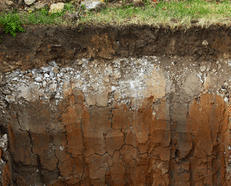Located on the western edge of Texas, the Igneous Aquifer provides municipal water for Jeff Davis, Presidio, and Brewster counties. It is primarily a municipal water source, supplying the residents of Fort Davis, Marfa, and Alpine, but local farmers also use it to irrigate their crops. The aquifer is composed of basalt, sandstone, and breccia. Due to the presence of igneous rock in the area, its water contains high levels of fluoride and silica, but is otherwise free of dissolved solids and can be consumed with little treatment.
Well yields vary greatly for different parts of the igneous aquifer. Marfa enjoys high yields, whereas the Fort Davis and Alpine areas have to make due with relatively low yields. This is because the aquifer is located in basalt, which varies wildly in its permeability. Less permeable parts of the rock formation have to be faulted and fractured before they will yield a steady supply of water, while more permeable areas provide water readily.
How Has The Texas Drought Affected The Aquifer?
In contrast to other aquifers in western Texas, the Igneous Aquifer has not experienced any serious decline in water levels over the past few decades. This is due to the aquifer's ability to rapidly recharge its water stores whenever precipitation occurs. Recent declines in rainfall and increases in the local population, however, have raised worries that the aquifer will not be able to continue meeting the area's needs. There has not yet been any serious water crisis, but officials are carefully monitoring the area.
Drilling Techniques
Igneous aquifers tend to be the most difficult aquifers to drill through, as their material is very hard, has little porosity, and has little hydraulic connectivity. The most common method used to drill for water is air rotary drilling, which digs boreholes into rock by means of a crushing action. A downward, rotational force is exerted on the rock, usually with the help of an impact hammer. If the job is more delicate, a rotational cutting drill bit is used; if the rock is particularly hard, these drill bits can be outfitted with diamond. Drillers estimate the well's productivity and then lay pipes through the drill holes, providing easy access to the water. This method is ideal for igneous rock, as it can be applied regardless of the rock's hardness.
Thinking about digging a well in the Igneous Aquifer? Talon/LPE Drilling Services performs affordable, safe, eco-friendly drilling operations. Among our techniques are hollow-stem augur drilling, air rotary drilling, mud rotary drilling, and soil boring. We also work in waste containment, well recovery, and well monitoring. Whatever your water needs, visit our website today!

